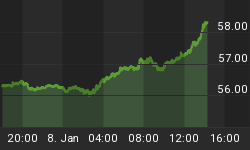The second tapering reduction, a further $10bn per month, was announced this week. It was we are told by the news channels fully expected. This is probably the initial reason why US Treasury prices rose on the news, because bears would have bought back their positions. However, weakness in emerging market currencies indicates that there is a safe-haven element developing in US Treasury bond prices.
It's against this background that gold traded in a $20 range between $1250 and $1270 until Thursday, when gold was finally sold down to the $1240 level and silver to $19.10. At the same time the US dollar rallied strongly, being the West's preferred safe-haven from emerging market currency volatility. This is now the developing story, which may turn out to be the mainspring behind the gold price in the coming months.
The big question is how will currency instability in emerging market economies affect demand for gold? Downward pressure, which has been brought on by the Fed's tapering policy, is forcing some Asian governments to increase interest rates. However, this at best is a short-term fix whose cost is less economic growth in the future. Particularly vulnerable are currencies whose central banks have limited quantities of dollars to hand, and while this excludes China, other gold-hungry Asian states such as India and Turkey are particularly vulnerable.
Traders in Western capital markets would probably conclude this is a reason to sell gold because of deflation in Asia, while the Oriental would see additional gold as the best protection you can have from the currency debasement that governments always rely upon in times of stress.
Looking beyond the rate hikes and the negative economic effects on emerging markets, we should be aware of the possibility that further selling of these currencies could accelerate. If so, we may have a replay of the East Asia crisis of 1997-98 on our hands with the addition of India, Turkey and half of Latin America.
The Fed is pre-occupied with domestic monetary policy, and for the moment it seems international monetary co-operation is secondary. But undermining emerging markets, which make up nearly half global GDP, is not ultimately in the interests of America's own economy. Given the sharp reaction in foreign exchange markets, it seems reasonable for the Fed to pause its tapering programme to give these emerging economies a chance to stabilise.
Next week
If this week's events are any guide, next week will see more retrenchment into safe haven investments. Meanwhile here is a summary of next week's announcements.
Monday. Japan: Vehicle Sales. UK: Halifax Price Index, CIPS/Markit Manufacturing PMI. Eurozone: Manufacturing PMI. US: Manufacturing PMI, Construction Spending, ISM Manufacturing, Vehicle Sales.
Tuesday. Eurozone: PPI. US: Factory Orders.
Wednesday. Eurozone: Composite PMI, Services PMI, Retail Trade. US: ISM Non-Manufacturing Index.
Thursday. UK: BoE Base Rate. Eurozone: ECB Interest Rate. US: Initial Claims, Non-Farm Productivity, Trade Balance, Unit Labour Costs.
Friday. Japan: Leading Indicator. UK: Industrial Production, Manufacturing Production, Trade Balance. US: Non-Farm Payrolls, Private Payrolls, Unemployment, Consumer Credit
















